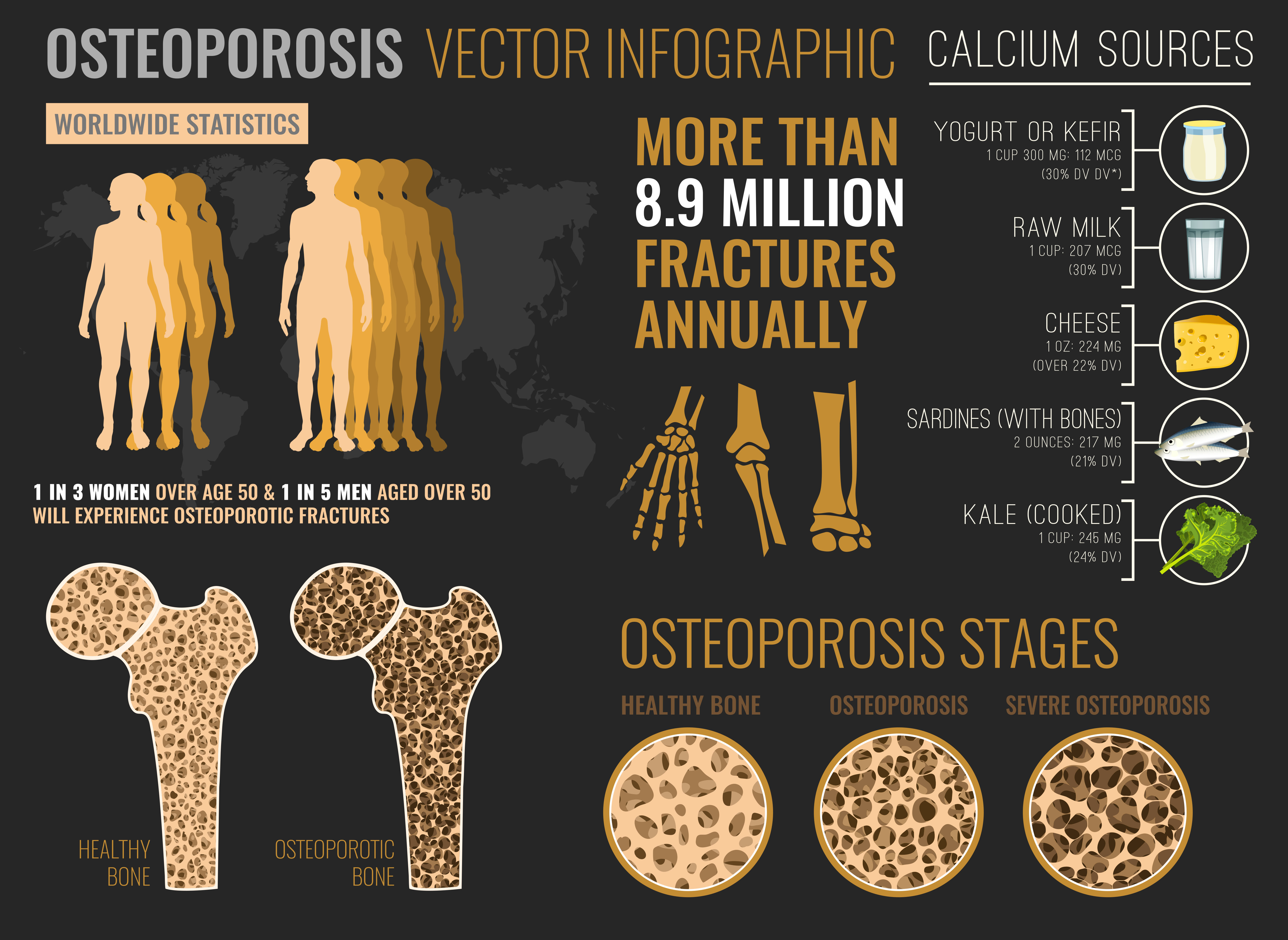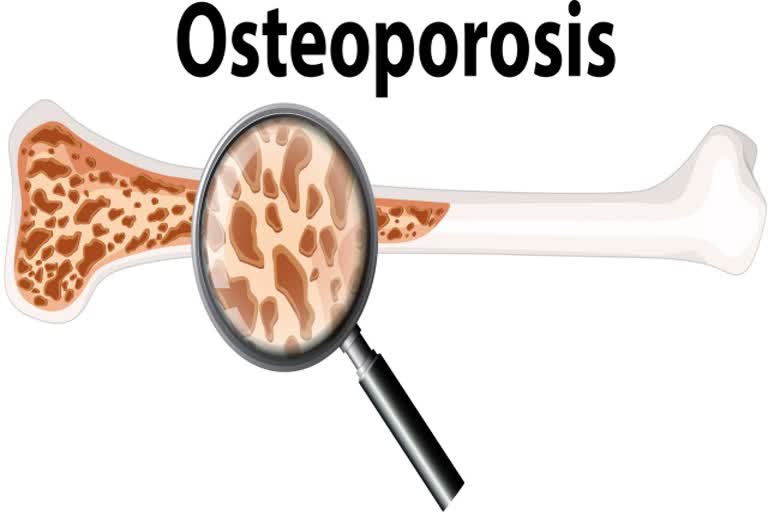Why Bone health is important, because they support our vital organs and keeps them away from injuries. Bone density once lost is difficult to regain in old age, so the importance of keeping our bones healthy during growing years is paramount. With age, lack of proper diet and exercise, as well as due to certain other health conditions, one is likely to develop fragile and brittle bones. This leads to weakened bones and bone related injuries and constant pain.

World Osteoporosis Day (WOD) is observed every year on 20th October across the world dedicated to create global awareness for prevention, diagnosis and treatment of osteoporosis.
WOD aims to make osteoporosis and fracture prevention a global health priority by reaching out to health-care professionals, the media, policy makers, patients, and the public at large.
How Common Is Osteoporosis?
According to the World Health Organization (WHO), osteoporosis has come second after heart disease as a global health problem. But its number of patients in India is estimated to be higher than in many other countries. Statistics show that, at present, there are about 3 crore people in India suffering from osteoporosis. Osteoporosis is more common in women than in men. It is estimated that 1 in every 8 men and 1 in every 3 women in India is suffering from osteoporosis. Usually people between 30 and 60 years old suffer from this condition. Although, earlier, symptoms of this condition were seen in people above 40 years of age, but now they can be seen in youth below 30 years as well.
What Is Osteoporosis?
According to the National Osteoporosis Foundation, Osteoporosis is a bone disease that occurs when the body loses too much bone, makes too little bone, or both. As a result, bones become weak and may break from a fall or, in serious cases, from sneezing or minor bumps.
Osteoporosis means “porous bone.” Viewed under a microscope, a healthy bone looks like a honeycomb. When osteoporosis occurs, the holes and spaces in the honeycomb are much larger than in healthy bone. Osteoporotic bones have lost density or mass and contain abnormal tissue structure. As bones become less dense, they weaken and are more likely to break. If you’re 50 or older and have broken a bone, ask your doctor or healthcare provider about a bone density test.
Causes of Osteoporosis
If there is deficiency of nutrients in the body such as calcium, magnesium, vitamin D and minerals, which are required for the bones, then the decay of bones starts rapidly. According to physicians, the main causes of osteoporosis are as follows.
- Lackadaisical lifestyle
- Unhealthy eating habits
- Lack of regular exercise
- Substance abuse and smoking
- Food adulteration and diabetes at an early age
Symptoms of Osteoporosis
In the early stages of osteoporosis, the patient shows no symptoms of this disease. This is known when pain begins in the hip, spinal cord or wrist, and the bones begin to weaken and break. Osteoporosis can be detected based on certain symptoms.
- Loosened gums
In osteoporosis, the gums become loose and teeth become weak. It reduces the density of the jaw bone. - Inability to hold
According to doctors, in this disease, weakness in the bones and muscles of the hands increases so much that people are unable to easily hold and lift things. - Weakness of the nails
With the help of weakened nails, decreasing density of the bones can be identified. - Decreased height
When the spinal cord is contracted, there is a slight reduction in the height of the person. When your height is reduced even a little, be careful and consult a doctor immediately. - Fracture
Fractures due to weak bones is the biggest symptom of this disease. Fractures occur very easily when there is severe osteoporosis. Sometimes when the conditions get worse, bones are likely to break even if a person coughs or sneezes.
Apart from this, symptoms like constant back pain, tiredness in the body, difficulty in doing any work and pain in hands and legs are also presented in this condition.
Diet for Healthy Bones
When we talk about healthier bones, the very first thing that comes to our mind is calcium. However, apart from calcium, vitamin D too is important for better absorption of calcium. Therefore, here are some of the foods, as suggested by the National Health Service (NHS) U.K. that are good sources of calcium and vitamin D:
Calcium
- milk, cheese and other dairy foods
- green leafy vegetables, such as broccoli, cabbage and okra, but not spinach
- soya beans
- tofu
- soya drinks with added calcium
- nuts
- bread and anything made with fortified flour
- fish where you eat the bones, such as sardines and pilchards
“Although spinach might appear to contain a lot of calcium, it also contains oxalic acid, which reduces calcium absorption, and it is therefore not a good source of calcium.”
Vitamin D
- oily fish, such as salmon, sardines and mackerel
- eggs
- fortified fat spreads
- fortified breakfast cereals
- some powdered milks
Oats, orange juice, mushrooms, etc. too can be considered.
Therefore, a healthier lifestyle, eating habits and regular exercise can ensure a good bone health, which will prevent one from suffering from osteoporosis.



